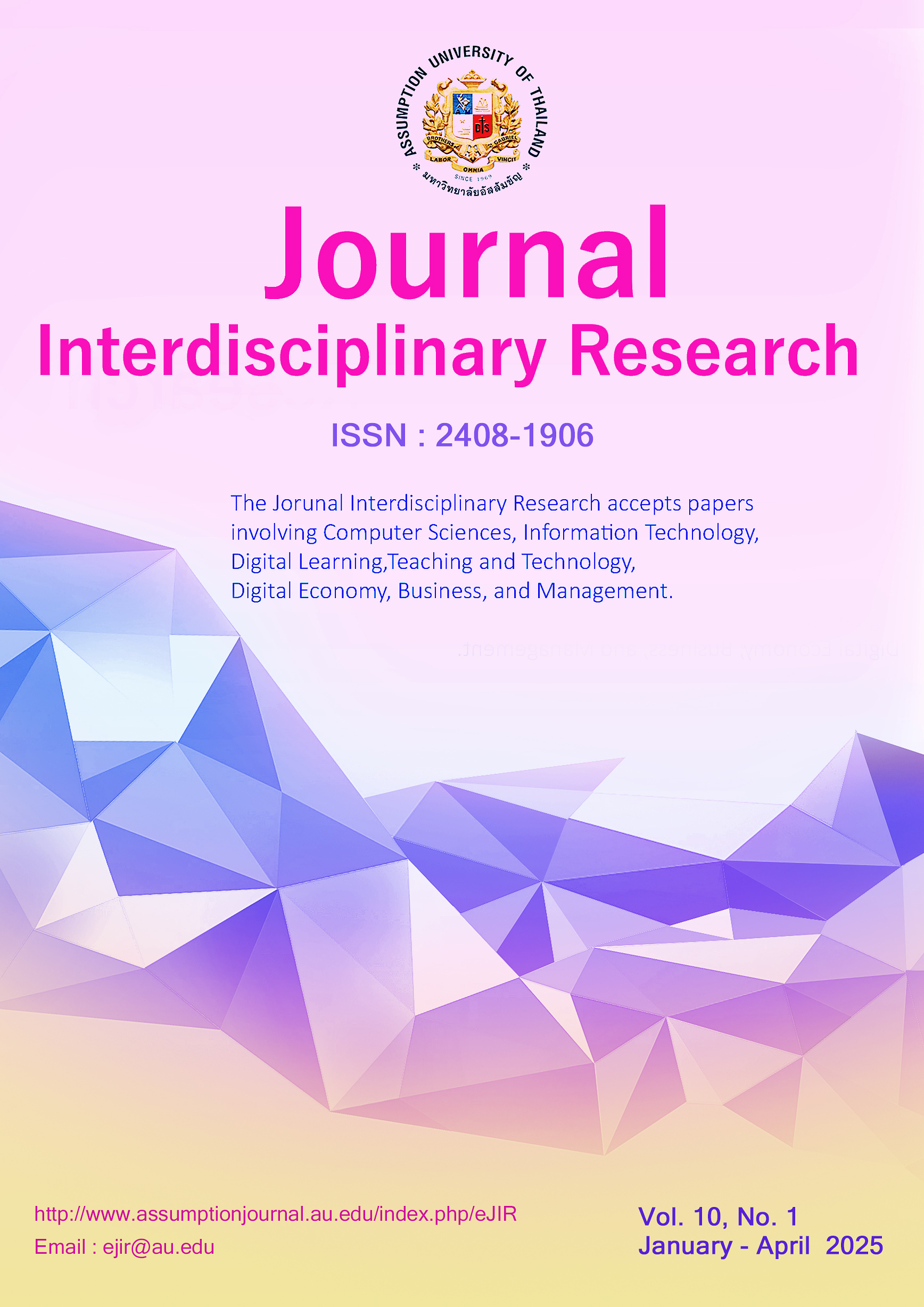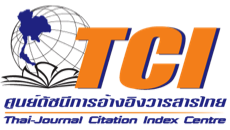Factors Influencing College Students' Cinema Visits for Animated Movies: A Case Study of Sichuan Universities in China
DOI:
https://doi.org/10.14456/au-ejir.2025.12Keywords:
Behavior Intention, Animated Film, Influencing Factors, Consumer Behavior, Culture and EconomicsAbstract
Purpose: This study explores the factors influencing college students' behavioral intention to watch animated movies in cinemas. The conceptual framework includes five independent variables and one dependent variable. Research design, data and methodology: The study employs the Index of Objective Consistency (IOC) for validity analysis and administers a small-scale questionnaire for testing, using Cronbach's Alpha for reliability analysis. A multiple linear regression analysis was conducted on 166 valid responses from students in Sichuan Province, China, to examine the relationships between the variables. Subsequently, an Intervention Design Experiment (IDI) was conducted with 30 college students. A paired-sample t-test was performed to compare the quantitative results before and after the IDI. Results: The multiple linear regression analysis revealed that Attitude, Perceived Behavioral Control, and Eudaimonic Motivation significantly influenced college students' intention to watch animated movies in cinemas. Finally, the paired-sample t-test results indicated significant differences between Pre-IDI and Post-IDI. Conclusions: This study contributes by showing that enhancing Attitude, Perceived Behavioral Control, and Eudaimonic Motivation increases university students' intention to watch animated movies in Sichuan. These findings serve as a strategic reference for film industry professionals and cinema operators in designing marketing strategies and interventions targeting university students.
References
Ajzen, I. (1985). From intentions to actions: A theory of planned behavior. In J. Kuhl & J. Beckmann (Eds.), Action control: From cognition to behavior (pp. 11-39). Springer.
Ajzen, I. (1991). The theory of planned behavior. Organizational Behavior and Human Decision Processes, 50(2), 179-211.
Ajzen, I., & Cote, N. G. (2008). Attitudes and the prediction of behavior. In W. D. Crano & R. Prislin (Eds.), Attitudes and attitude change (pp. 289-305). Psychology Press.
Allport, G. W. (1933). Attitudes. In C. Murchison (Ed.), A handbook of social psychology (pp. 798-844). Clark University Press.
Al-Swidi, A., Huque, S. M. R., Hafeez, M. H., & Shariff, M. N. M. (2014). The role of subjective norms in theory of planned behavior in the context of organic food consumption. British Food Journal, 116(10), 1561-1580.
https://doi.org/10.1108/BFJ-05-2013-0105
Aslam, W., Farhat, K., & Arif, I. (2019). Role of electronic word of mouth on purchase intention. International Journal of Business Information Systems, 30(4), 411-426.
Baek, H., Oh, S., Yang, H. D., & Ahn, J. (2017). Electronic word-of-mouth, box office revenue, and social media. Electronic Commerce Research and Applications, 22, 13-23.
Behzadnia, B., & Ryan, R. M. (2018). Eudaimonic and hedonic orientations in physical education and their relations with motivation and wellness. International Journal of Sport Psychology, 49(5), 363-385.
Belson, W. A. (1958). The effect of television on cinema going. Audio Visual Communication Review, 6(2), 131-139.
Braaten, A., Huta, V., Tyrany, L., & Thompson, A. (2019). Hedonic and eudaimonic motives toward university studies: How they relate to each other and to well-being derived from school. Journal of Positive Psychology and Wellbeing, 3(2), 179-196.
Chang, H. J., Eckman, M., & Yan, R. N. (2011). Application of the Stimulus-Organism-Response model to the retail environment: The role of hedonic motivation in impulse buying behavior. The International Review of Retail, Distribution and Consumer Research, 21(3), 233-249.
Chang, M. K. (1998). Predicting unethical behavior: A comparison of the theory of reasoned action and the theory of planned behavior. Journal of Business Ethics, 17(16), 1825-1834. https://doi.org/10.1023/A:1005721401993
Chen, C. C., & Lin, Y. C. (2018). What drives live-stream usage intention? The perspectives of flow, entertainment, social interaction, and endorsement. Telematics and Informatics, 35(1), 293-303.
Cho, Y., & Ha, J. (2004). Users' attitudes toward movie-related websites and e-satisfaction. Journal of Business & Economics Research (JBER), 2(3), 1-10.
Cronbach, L. J. (1951). Coefficient alpha and the internal structure of tests. Psychometrika, 16(3), 297-334.
Deci, E. L. (1971). Effects of externally mediated rewards on intrinsic motivation. Journal of Personality and Social Psychology, 18(1), 105-115.
Deci, E. L., & Ryan, R. M. (1985). The general causality orientations scale: Self-determination in personality. Journal of Research in Personality, 19(2), 109-134.
De Vany, A. S., & Walls, W. D. (2004). Motion picture profit, the stable Paretian hypothesis, and the curse of the superstar. Journal of Economic Dynamics and Control, 28(6), 1035-1057.
Ferrari, M. J., & Rudd, A. (2008). Investing in movies. Journal of Asset Management, 9(1), 22-40. https://doi.org/10.1057/palgrave.jam.2250091
Filimonov, D. (2017). Extrinsic motivation and incentives [Bachelor’s thesis]. Haaga-Helia University of Applied Sciences.
Fishbein, M., & Ajzen, I. (1975). Belief, attitude, intention, and behavior: An introduction to theory and research. Addison-Wesley.
Hair, J. F. (2009). Multivariate data analysis (7th ed.). Prentice Hall.
Hair, J. F., Anderson, R. E., Tatham, R. L., & Black, W. C. (1995). Multivariate data analysis. Prentice-Hall.
Haularizki, R., & Rahayu, F. (2022). Meningkatkan minat menonton film di bioskop melalui sikap penonton melalui pengelolaan attitude terhadap intention to watch movies. Jurnal Ekonomi Trisakti, 2(2), 691-702.
Heale, R., & Twycross, A. (2015). Validity and reliability in quantitative studies. Evidence-Based Nursing, 18(3), 66-67. https://doi.org/10.1136/eb-2015-102129
Hill, M., Mann, L., & Wearing, A. J. (1996). The effects of attitude, subjective norm, and self‐efficacy on intention to benchmark: A comparison between managers with experience and no experience in benchmarking. Journal of Organizational Behavior, 17(4), 313-327.
Huta, V., & Ryan, R. M. (2010). Pursuing pleasure or virtue: The differential and overlapping well-being benefits of hedonic and eudaimonic motives. Journal of Happiness Studies, 11, 735-762. https://doi.org/10.1007/s10902-009-9171-4
Huta, V., & Waterman, A. S. (2014). Eudaimonia and its distinction from hedonia: Developing a classification and terminology for understanding conceptual and operational definitions. Journal of Happiness Studies, 15, 1425-1456. https://doi.org/10.1007/s10902-013-9485-0
Jia, N., Li, W., Zhang, L., & Kong, F. (2022). Beneficial effects of hedonic and eudaimonic motivations on subjective well-being in adolescents: A two-wave cross-lagged analysis. The Journal of Positive Psychology, 17(5), 701-707.
https://doi.org/10.1080/17439760.2021.2001723
Joshi, A. M., & Hanssens, D. M. (2009). Movie advertising and the stock market valuation of studios: A case of “great expectations”? Marketing Science, 28(2), 239-250. https://doi.org/10.1287/mksc.1080.0404
Kim, J. G. (2015). Study on determinants of intention to watch movie applying the theory of planned behavior: Focused on role of presentation format of movie poster. Asia-Pacific Journal of Business Venturing and Entrepreneurship, 10(6), 177-186.
Lu, J., Yao, J. E., & Yu, C. S. (2005). Personal innovativeness, social influences, and adoption of wireless internet services via mobile technology. The Journal of Strategic Information Systems, 14(3), 245-268. https://doi.org/10.1016/j.jsis.2005.07.001
Park, S. Y. (2013). Effects of nostalgia, expectation, and evaluation on the intention to watch a movie: Focused on the case of Sunny. The Journal of the Korea Contents Association, 13(12), 614-625.
Pumares, M. J., Simone, P., Kevin, D., Ene, L., & Milla, J. T. (2015). Mapping the animation industry in Europe. European Audiovisual Observatory.
Raven, B. H. (1964). Social influence and power. University of California, Department of Psychology.
Ribeiro, C. A. B. (2020). The role of IMDb online community engagement on the motivation and intention to watch movies [Master's thesis]. ISCTE-Instituto Universitário de Lisboa, Portugal.
Rothschild, M. L., & Gaidis, W. C. (1981). Behavioral learning theory: Its relevance to marketing and promotions. Journal of Marketing, 45(2), 70-78. https://doi.org/10.1177/002224298104500208
Sekaran, U. (2016). Research methods for business: A skill-building approach (7th ed.). Wiley.
Tarkiainen, A., & Sundqvist, S. (2005). Subjective norms, attitudes, and intentions of Finnish consumers in buying organic food. British Food Journal, 107(11), 808-822. https://doi.org/10.1108/00070700510629760
Terry, N., Butler, M., & De'Armond, D. (2004). Critical acclaim and the box office performance of new film releases. Southwestern Economic Review, 31(1), 25-36.
Thomas, W. I., & Znaniecki, F. (1918). The Polish peasant in Europe and America: Primary-group organization (2nd ed.). University of Chicago Press.
Trabelsi, R. E., & Mbarek, O. B. (2021). Impact of e-WOM on user’s purchase intention in the film industry. Recherches en Sciences de Gestion, 145(4), 101-118.
Ward, P. (2000). Defining "animation": The animated film and the emergence of the film bill. Scope: An Online Journal of Film Studies, 1-11.
Yu, K. T., Lu, H. P., Chin, C. Y., & Jhou, Y. S. (2019). Box office performance: Influence of online word-of-mouth on consumers’ motivations to watch movies. Social Behavior and Personality: An International Journal, 47(10), 1-17.
Downloads
Published
How to Cite
Issue
Section
License
Copyright (c) 2025 Zhang Jie

This work is licensed under a Creative Commons Attribution 4.0 International License.
A separate Copyright Form will be sent to authors whose paper is accepted for publication.






